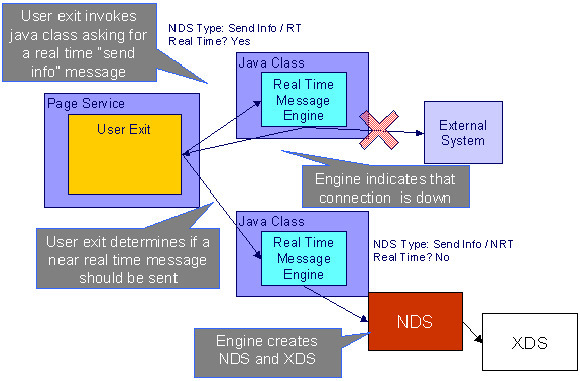Sending Real Time Messages in Near Real Time
If the connection is not available when the real time engine attempts to communicate with the target, the engine may post the message to the download staging tables to send in "near real time" when the target system is available again.
Messages should only be posted to the staging table if the user does not need to wait for a response in real time. Consider the following examples:
- A real time message is used to request information from an external system to display to a user on a page. If the connection is down, it does not make sense to store a near real time message for this case because the user is not able to wait for the response to the request.
- There is a connection problem when the user attempts to send information to an external system. In this case, perhaps it makes sense to store a near real time message so that the information is sent to the external system when the connection is restored.
Note. The real time message engine does not make the decision to post a message near real time when the communication is unavailable. The responsibility lives solely with the user exit that calls the java class that invokes the engine. The following diagram illustrates a possible interaction between the user exit and the message engine:

The following points describe the diagram:
- When the user exit is informed that the real time message could not be sent, it is the responsibility of the user exit to decide if the engine should be invoked again to create a near real time message.
- The NDS type used for near real time messages is different than the one used for real time messages. The reason is because the XSL transformation script is different for real time vs. near real time.
- The NDS is created and marked pending.
- The XDS record is created and marked pending. The XML message that is ready to be sent to the sender is posted as the XML request for the XDS.
Because the XML request is already built, the NDS type used for the NDS should reference a special XAI inbound service. This service basically tells the download staging sender that the XDS already exists and doesn't need to be created.
